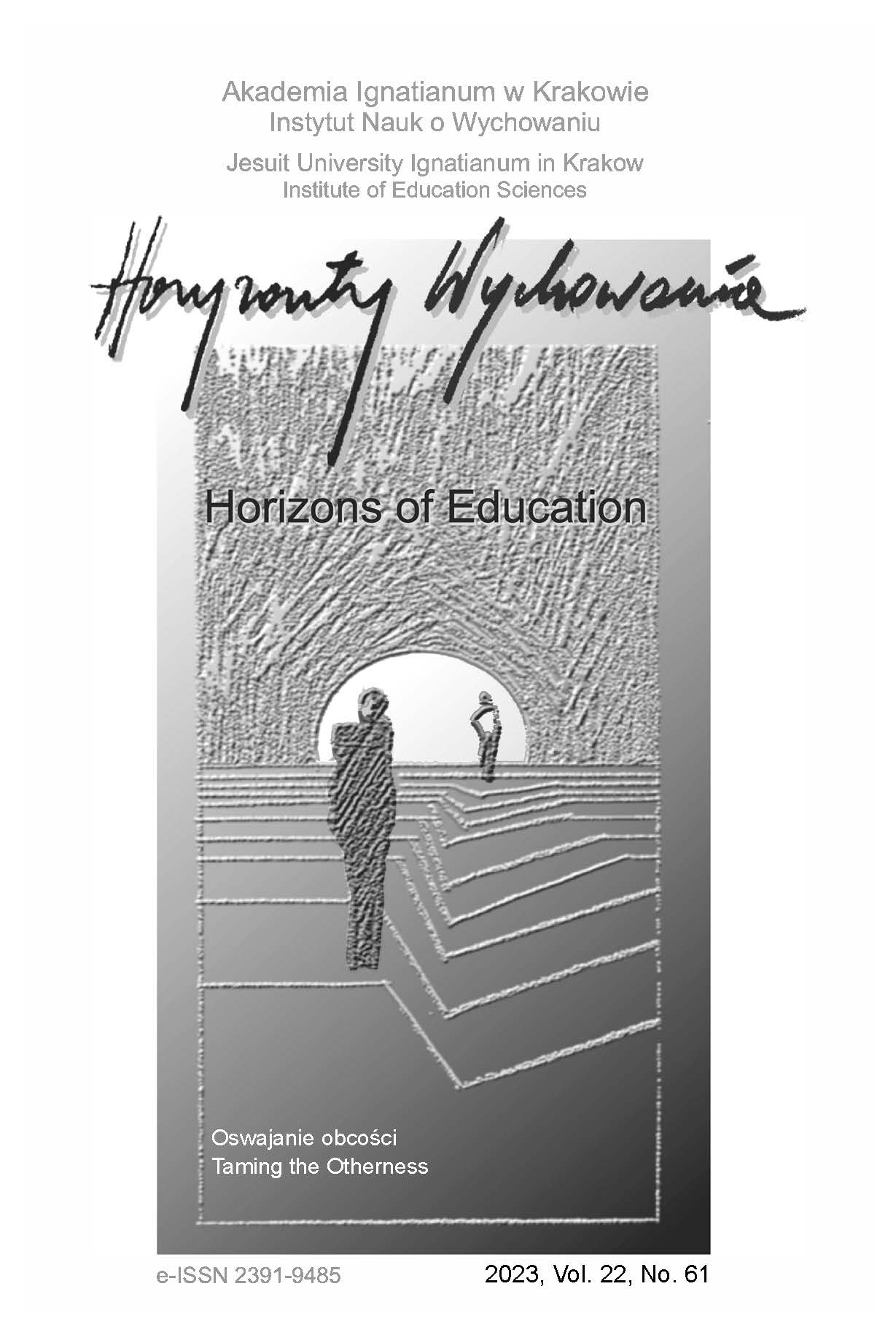Stereotypical Images of Ukrainians and Russians in a HumanitarianCrisis: Multicultural Perspectives
Abstract
RESEARCH OBJECTIVE: This article aims to map the stereotypical image of Ukrainians and Russians from a cross-cultural perspective in the context of the ongoing armed conflict.
RESEARCH PROBLEM AND METHODS: The research problem concerns the cultural differences that are revealed in the perception of representatives of the two nationalities that are involved in the armed conflict. Since stereotypical judgements are most often revealed in language, an adjective check list was used for the study. A sample of 92 Polish and Slovenian students took part in the study. The collected linguistic material was used to analyse and compare cross-cultural stereotypical judgements about Ukrainian and Russian citizens.
THE PROCESS OF ARGUMENTATION: The argument begins with theoretical perspectives on the concept of stereotyping and the process of stereotyping. The role of language in the stereotyping process is analysed. An analysis of the results and conclusions is presented.
RESEARCHRESULTS: In general, Polish students attribute fewer positive adjectives than Slovenian students to both Ukrainians and Russians. The analysis revealed significant statistical differences as well as similarities between the researched groups of Polish and Slovenian students in terms of the stereotypical image of Ukrainians and Russians.
CONCLUSIONS, INNOVATIONS, RECOMMENDATIONS: Empirical evidence shows that Polish and Slovenian students have more in common in their perception of Russians, while they perceive Ukrainians quite differently. The linguistic characteristics obtained in this study provide a general insight into the perceptions of the two nationalities involved in the war. It should also be noted that these characteristics of Ukrainians and Russians may constitute socially important knowledge on the negative stereotypes about these nationalities. This knowledge may be useful in challenging counteracting or disseminating such judgements, which may be harmful and lead to prejudice or discrimination against people from the nationalities studied.
References
Allport, G.W. (1954). The nature of prejudice. Addison-Wesley.
Ashmore, R.D., & Del Boca, F.K. (1981). Conceptual approaches to stereotype and stereotyping. In D.L. Hamilton (Ed.), Cognitive process in stereotyping and intergroup behaviour (pp. 1-36). Erlbaum.
CBOS. (2022, August). Komunikat z badań. Polacy wobec wojny na Ukrainie i ukraińskich uchodźców. https://www.cbos.pl/SPISKOM.POL/2022/K_101_22.PDF
Cohen, J., Cohen, P., West, S.G., & Aiken, L.S. (2003). Applied multiple regression/correlation analysis for the behavioral sciences (3rd ed.). Routledge.
Craig, R.J. (2005). Assessing personality and mood with adjective check list methodology: A review. International Journal of Testing, 5(3), 177-196.
Eurobarometer. (2022a). EU’s response to the war in Ukraine, https://europa.eu/eurobarometer/surveys/detail/2772
Eurobarometer. (2022b). Summer Eurobarometer 2022, https://europa.eu/eurobarometer/surveys/detail/2693
Gough, H.G., & Heilbrun, A.B. (1983). The adjective check list manual. Consulting Psychologists Press.
Hamilton, D.L., & Trolier, T.K. (1986). Stereotypes and stereotyping: An overview of the cognitive approach. In J.F. Dovidio & S.L. Gaertner (Eds.), Prejudice, discrimination, and racism (pp. 127- 163). Academic Press.
Karolczuk, M. (2021). Obraz Rosjan, Białorusinów i Ukraińców w języku polskich studentów jako potencjalny wyznacznik relacji ze wschodnimi sąsiadami. Roczniki Humanistyczne, 69(6), 87-100.
Lippmann, W. (2023, January 28). Public Opinion. (Original work published 1921). https://wps.pearsoskiencustom.com/wps/media/objects/2429/2487430/pdfs/lippmann.pdf
MacFarland, T.W. (2012). Two-way analysis of variance. Statistical tests and graphics using R. Springer.
Macrae, C.N., Stangor, Ch., & Hewstone, M. (1999).Stereotypy i uprzedzenia (M. Majchrzak et al., Trans.). Gdańskie Wydawnictwo Psychologiczne.
Mininni, G. (1982). Psicosemiotica. Adriatica Editrice.
Nelson, T.D. (2003). Psychologia uprzedzeń (A. Nowak, Trans.). Gdańskie Wydawnictwo Psychologiczne.
Rodziewicz, B. (2019). Konceptualizacja pojęć zdrowie i здоровье jako wartości w świetle badań empirycznych (ujęcie psycholingwistyczne). Roczniki Humanistyczne, 67(7), 63-77.
Wu, M.-J., Zhao, K., & Fils-Aime, F. (2022). Response rates of online surveys in published research: A meta-analysis. Computers in Human BehaviourReports, 7, 100206, https://doi.org/10.1016/j.chbr.2022.100206
Copyright (c) 2023 HORIZONS OF EDUCATION

This work is licensed under a Creative Commons Attribution-NoDerivatives 4.0 International License.
Authors who publish in this journal agree to the following terms:
- Authors retain the copyright to their work while granting the journal the right of first publication. The work will be simultaneously licensed under a CC BY-ND license, which permits others to share the work with proper credit given to the author and the original publication in this journal.
- Authors may enter into additional, non-exclusive agreements for the distribution of the published version of the work (e.g., posting it in an institutional repository or publishing it in another journal), provided that the original publication in this journal is acknowledged.
We allow and encourage authors to share their work online (e.g., in institutional repositories or on personal websites) both before and during the submission process, as this can foster beneficial exchanges and lead to earlier and increased citations of the published work. (See The Effect of Open Access). We recommend using any of the following academic networking platforms:





